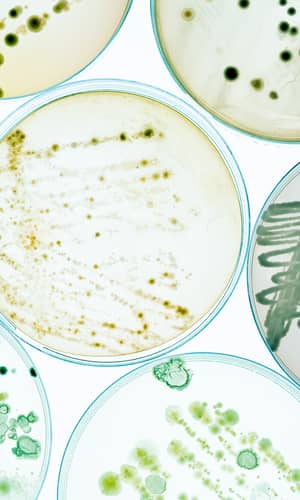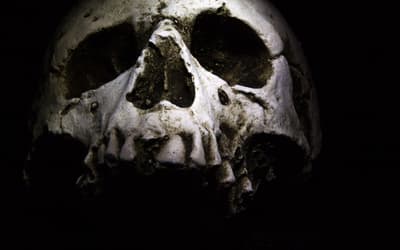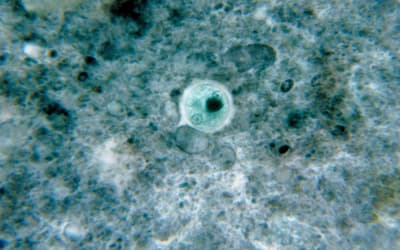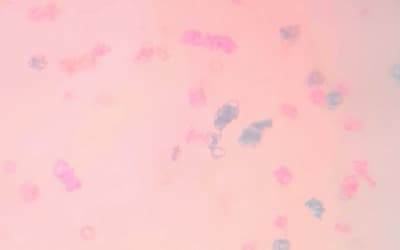The views expressed in this paper are those of the writer(s) and are not necessarily those of the ARJ Editor or Answers in Genesis.
Abstract
For many years the roles of microbes as part of God’s wonderful design have been neglected. Perhaps it is because many people associate microbes as the cause of death, disease, and suffering.
Introduction
For many years the roles of microbes as part of God’s wonderful design have been neglected. Creationist literature is largely void of topics related to these tiniest creatures. Perhaps it is because many people associate microbes as the cause of death, disease, and suffering. This is true for only a fraction of microbes; the large majority are extremely vital for sustaining life on earth. Their roles range from recycling nutrients in soil and water to symbiotic relationships that provide necessary factors to their host. Their role in death and disease is a result of the Fall and the Curse on all living things.
The task of creation microbiology is enormous, considering the number of microbial species which have yet to be discovered and characterized. Some estimates put the number of bacterial species on earth at 10 million. If there is a unique bacteriophage species for every bacterial species, then the number of viral species could easily be estimated to be several orders of magnitude greater than 10 million. The task of understanding and observing the microbial world is daunting when we consider that we have only documented around 5,000 bacterial species. In addition there is much yet to be learned about algae, fungi, macro-parasites, and the enigmatic “chimeric” lichens. Could there be other creatures composed entirely of microbes of which we are unaware? In addition, how do we classify microbes taxonomically from a creation perspective? Do they fit into conventional or baraminic taxonomical convention? How do we view them biblically? What day were they created? What were they originally created for? Were they created as separate baramins or were they created as parts of other organisms? Or were they created as part of the earth on Day Three? These are just some of the intriguing questions facing the field of creation microbiology.
Recently, Dr. Joseph Francis has suggested that microbes form the “organosubstrate” of life (Francis 2003). They serve as intermediaries between living things and the physical world around them. Just as we have organelles (tiny organs) inside our cells, microbes might be thought of as extracellular organelles that help living things interact with their environment. For instance, it is predicted that microbes reside on every living creature, where they have been shown to play long-term beneficial and life-sustaining roles, and thus it appears that microbes could have been created as part(s) of each of the original baramins. Microbes are found in abundance in terrestrial and aquatic environments where they participate in all major biogeochemical cycles. Therefore microbes could have been created as part of the soil and during the formation of the great bodies of water on earth. In addition, few microbes operate as isolated single-cell creatures; many cooperate in intricate and complex communities. Some microbes can form elaborate multicellular plant-like structures which include leaf, root, and stem-like structures. Perhaps microbes existed in these forms more commonly in the pre-Fall Garden than they do today. We certainly are not seeing the full picture, but we can observe remnants of the “very good” creation in the microbial world. In this model, pathogenic microbes are seen as a deviation from God’s original plan, due to the Fall of man.
Evolutionary theory is quick to point out the relative “simplicity” of microbes and that they represent the common ancestor from which all of life has evolved. New discoveries reported almost daily show microbes are anything but simple. The ability of microbes to adapt to their environment through various genetic mechanisms, such as in the case of antibiotic resistance, is often touted as an example of evolution in action. While this leads to change within a bacterial population, it does not support the type of change needed for microbes-to-man evolution. In addition, microbes are unique from animal, plants, and humans in their need for variety to deal with changing environments which they may not be able to escape.
This forum was needed to draw on the knowledge of biblical creation scientists from around the country who have been formally trained and specialize in microbiology. It was hoped that through this vital sharing of knowledge that ideas and models could be discussed and published to bring the topic of microbes to the forefront of creation biology. The forum was held at Answers in Genesis headquarters in Petersburg, Kentucky, June 26–29, 2007.
Keywords: microbes, bacteria, viruses, fungi, parasites, pathogenic, mutations, disease, Creation, Fall.
Abstracts
Creationist Model of Bacterial Mutations
Kevin Anderson, Creation Research Society,
Chino Valley, Arizona
Mutations in a bacterial cell may affect the organism’s phenotype. This can play a key role in bacterial adaptation to changing environments. Such mutational adaptation appears to have designed features and serves the organism’s ability of survival and contribution to ecological niches. However, creationists have tended to have an inconsistent view of such “beneficial mutations” within a creation framework.
Various mutations can be shown to provide a beneficial phenotype to bacterial populations. This phenotype can often undergo strong positive selection, but the effects are generally temporary and limited. Some common examples of beneficial mutations are those involved in adapting to stress conditions. For instance, adaptive mutations are a unique phenomenon used by bacteria to survive very specific stressful conditions. The exact mechanism is controversial, but it appears to involve a mutation rate higher than random mutations would generate. Various mutations also enable bacteria to survive temporary exposure to high temperatures or starvation. Such mutations usually involve loss of certain sigma factors, DNA repair, or specific regulatory controls. Antibiotic resistance is another example of stress survival. Some mutations potentially enable the bacterium to survive exposure to various antibiotics, but the resistance results from loss or reduction of preexisting activities such as enzymatic, regulatory, or transport systems. Other examples include several subpopulations of mutant strains of bacteria obtained over a period of up to 20,000 generations. These mutants have a greater “fitness” than the wild-type strain. However, analysis shows that most contained deletion mutations in various genes.
These examples entail mutations that are phenotypically beneficial under certain environmental conditions. However, these mutations also frequently eliminate or reduce preexisting cellular systems and functions. This has been referred to as antagonistic pleiotropy; a temporary benefit for surviving one environmental condition at the expense of systems used for other environments. If the environmental conditions change, the mutation usually becomes less beneficial and perhaps even detrimental. As such, beneficial mutations in bacteria fit well in a creation model where biological systems and functions were fully formed at creation, and some subsequent mutations can provide conditional benefits even though the mutation is generally degenerative. Also, mutations give bacteria the ability to rapidly adapt to ever-changing environments and food sources.
How Do Mitochondrial Ribosomes Fit into the
Theory of Endosymbiosis?
Daniel Criswell, Institute for Creation Research,
Dallas, Texas
The Endosymbiotic Theory postulates that eukaryotic cells arose from the symbiosis of smaller aerobic prokaryotes living within a larger prokaryote. These symbionts evolved an interdependence of biochemical systems leading to the development of eukaryotes with specialized organelles such as mitochondria. The mitochondria of mammalian cells and other eukaryotes are theorized to be the descendants of the aerobic prokaryotes that were engulfed by larger prokaryotes. This assumption was based partly on the notion that ribosomes found in the mitochondria would be similar to the 70S ribosomes found in prokaryotes. However, it is now apparent that ribosomes in mammalian mitochondria and other eukaryotes are unique, with little resemblance to prokaryote ribosomes.
Prokaryote 70S ribosomes are 2/3 ribosomal ribonucleic acid (rRNA) and 1/3 protein by weight while mammalian mitochondrial 55S ribosomes are 2/3 protein and 1/3 rRNA, making the 55S ribosome heavier but more porous than the 70S ribosomes. Structural analysis has confirmed this and shows that the internal structures of prokaryote ribosomes versus mitochondrial ribosomes are quite different. There is no significant sequence homology between mitochondrial and prokaryote ribosome nucleic acids or proteins except at the functional sites of the ribosomes, which is expected. In fact, eukaryote 80S cytosolic ribosome sequences are more conserved than mitochondrial ribosomes in relation to prokaryote ribosomes. Nearly all of the peripheral portions of the 55S ribosomes are not homologous to 70S ribosomes in sequence or protein/rRNA content.
It is widely accepted that the amount of rRNA has been reduced over evolutionary time from prokaryotes to mammalian mitochondrial ribosomes and replaced by proteins recruited from the nuclear genome. However, Reclinomonas americana, frequently presented as a close link to prokaryotes, has more rRNA than most prokaryotes, as does the yeast Saccharomyces cerevisiae, and the vinegar eel Caenorhabditis elegans has even less rRNA than mammals.
The significant differences in global ribosome structure, sequence homology, and even evolutionary phylogeny contradict the expectations of traditional Endosymbiotic Theory. Based on these differences the Endosymbiotic Theory of eukaryotic origins should be rejected.
Creation Microbiology and the Origin of
Disease
Joseph W. Francis, The Master’s College, Santa
Clarita, California
Many pathogenic microbes appear to be altered when compared to non-disease-causing microbes. Creationists suggest that this alteration may have occurred as a result of the Fall. However, some microbes may cause disease not because they are altered in some fashion (through genetic changes) but because they have spread to a location which allows them to invade an organism they were not created to interact with.
Consider, for instance, the cholera-causing bacterium Vibrio cholera. This bacterium secretes several factors which are involved in virulence. However, some of these same virulence factors have been show to promote growth of V. cholera on chitin. Chitin is the most abundant polysaccharide in the ocean because it is a major component of many exosekeleton-bearing sea creatures like shrimp, lobster, and crabs. V. cholera and other Vibrio species appear to be intricately involved in the degratory cycle of chitin and appear more fit for this environment than other locations in which they are found. The Vibrio cholera–induced breakdown of chitin promotes a major influx of carbon into the ocean environment. Several events must occur to move V. cholera from the chitin-rich environment into a location whereby they cause disease in humans. For instance, V. cholera is found off the coasts of many countries but cholera occurs as an epidemic in only a few locations. In addition, epidemics tend to take place after the occurrence of certain extreme weather conditions. Furthermore, there is some evidence to suggest that cholera toxin, which causes major loss of salts from the human body, may promote life-sustaining salt metabolism changes in sea creatures which move from fresh water to salt water environments.
From a creation view, it appears, then, that the origin of microbial based disease has at least two primary causes, (1) post-Fall genetic alteration of the original good microbe and/or (2) post-Fall displacement or movement of the microbe from the site where it performed its beneficial function. This work was first presented at the fifth annual meeting of the Creation Biology Study Group (Francis 2006).
Using Serratia marcescens as a Model to
Elucidate Aspects of Germ Genesis in Bacteria
Alan L. Gillen, Liberty University, Lynchburg,
Virginia
For creationists, biblical studies and current microbiological research suggests that factors leading to pathogenicity in bacteria may be attributed to the Fall of man and the Curse on the original “good” creation that is now undergoing decay. The origin of bacterial diseases is complex and multifaceted and may be explained by a combination of factors including mutations, mobile genes, and man’s protective defense mechanisms. The hypothesis is that a common pattern in the origin of bacterial diseases found in many is the modification and displacement of originally “good” bacteria.
A common focus among creationists has been the degeneracy in genomic pathways that lead to pathogenesis. Most bacterial diseases are too complex to be the result of the simple deterioration of a bacterial genome. A more likely genome “recipe” for germ genesis is to reduce, add, and “stir” the DNA. The loss of genomic and metabolic pathways has been typically understated in the evolutionary biology literature.
The bacterium Serratia marcescens may serve as a model for genomic decay leading to pathogenicity. S. marcescens is noted for the production of a bright red pigment called prodigiosin. The metabolic pathways involved in prodigiosin production are numerous and complex, so mutations affecting any of these pathways could result in loss of pigment production. Most (70–93%) Serratia infections are caused by naturally occurring white mutants, which also often bear antigenic flagella and appear to be more host dependent.
In the initial stages, we seek to develop and elucidate a research model using S. marcescens. UV irradiation can transform prodigiosin-producing organisms into nonproducing white mutants. In our experiments to maximize random mutations correlated with loss of prodigiosin, radiation time influenced mortality and the number of white mutants that grew. The degeneracy of prodigiosin production in our experiments have some similarity (i.e., some UV white mutants have greater motility and have lost some metabolic capabilities) to that in clinical strains (933 and WF), suggesting a possible link to pathogenicity. The initiation rate and degree of pathogenicity in the UV white mutants is unknown, but those that develop numerous flagella are more likely to become pathogenic via transduction or another undetermined mechanism. Future investigations will explore this inverse relationship of prodigiosin production with motility (i.e., flagella), pathogenicity, and host dependency. Germ genesis in S. marcescens (from saprophyte to pathogen) appears to be a good model of bacteria that first lost metabolic pathways, then acquired foreign genes (phages), and finally had its DNA “stirred.” A once harmless saprophyte has now become an opportunistic pathogen.
Viral/Bacterial Attenuation and Its Link to Innate
Oncolytic Potential: Implications of the Perfect
Original Creation in the Beginning
Luke Kim,1 Independent Scholar
The Bible tells us that microorganisms such as bacteria and viruses were created by the Lord (Colossians 1:16). Since the discovery of microorganisms, they have been mainly recognized as disease-causing agents. However, most microorganisms are benign (indirectly beneficial) or beneficial to humans or other organisms. For example, recent cancer/molecular biology studies show that many benign or attenuated bacteria/viruses are powerful anti-cancer agents specifically targeting cancer cells while sparing the normal ones. Even pathogenic strains of bacteria and viruses can be attenuated to convert them to oncolytic viruses or bacteria. Currently, some of these oncolytic viruses and bacteria are being used for various stages of clinical trials for anti-cancer therapy.
After the Fall, the Bible (Genesis 3:18) suggests that post-Fall viral/bacterial oncolytic activity may have arisen as a phenotypic extension of preexisting normal viral/bacterial activities (possibly serving a role as apoptosis inducer, activator of cellular signalling pathways, etc.) due to a change to harsh biological environments. Ubiquitousness and persistence of these microbes in the biological ecosystem strongly implicate a beneficial microbe-host interaction in the original creation and subsequent disruption of the beneficial microbe-host interaction after the Fall. Nonetheless, due to their genetic flexibility, some viruses and bacteria today still display some of their original/derivative functions, such as oncolytic activity. The study of beneficial microbe-host interactions will help us comprehend the correct biological view of microorganisms (before and after the Fall) from a biblical perspective.
Endogenous Retroviruses: Remnants of Germline
Infection or Created in the Cell?
Yingguang Liu, Maranatha Baptist Bible College,
Watertown, Wisconsin
The genomes of all vertebrates and humans harbor multiple copies of endogenous retroviruses (ERVs), most of which are replication-deficient. The endogenization theory has been proposed by evolutionists to explain the origin of ERVs, i.e., they diverged from exogenous retroviruses that infected the germline of the host’s ancestors. The best evidence for the theory is that some modern exogenous viruses can infect the germline and be inherited. However, the theory is contradicted by several obvious facts: (1) Stable endogenization of modern exogenous retroviruses is rare in nature. (2) Xenotropic ERVs reside in cells that have no receptor for them. (3) Essential beneficial functions of some ERV genes and irreducibly complex coordination between ERVs and host DNA sequences argue for coexistence of ERVs and the host from the beginning.
Several instances of beneficial ERVs have been observed. Recently, there has been much investigation on the function and regulation of syncytins, which are the env proteins of ERVs. Syncytins have been shown to be critical for inducing cell fusion during placenta development. Efficient tissue-specific expression of human syncytin-1 requires cis-acting elements in both the ERV and host sequences (including an enhancer) upstream of the ERV. Furthermore, expression of syncytins is under the control of host sex hormones. If the syncytins are indeed essential for mammalian reproduction, they appear to be components of an irreducibly complex system that have to be created together to perform the intended function.
These findings suggest that at least some ERVs must have been incorporated into the initial design of eukaryotic life. Exogenous retroviruses might have been created simultaneously for the maintenance of ERVs or for transduction of cellular genes.
Pathogenicity Tools and Mycotoxins: In the Beginning or after the Fall?
Ira S. Loucks,1 Independent Scholar
Fungi are amazing organisms. As a group, they have colonized practically every ecological niche on earth. Originally created “very good,” certain fungal interactions have degenerated over time resulting in serious human and animal diseases. Fungi are also capable of producing powerful compounds called mycotoxins, which are products of the nonessential processes of secondary metabolism. Mycotoxins are a type of secondary metabolite, and as such are not normally required for normal growth and reproduction. In fact, one particular mycotoxin, ergot alkyloid, may have been the cause of the Salem Witch Trials. Consumption of ergot alkyloid can result in hallucinations, convulsions, and gangrene of the extremities. Other mycotoxins are potent carcinogens, while others are immunosuppressive. However, other secondary metabolites are useful. Many antibiotic drugs including penicillin and cyclosporin are secondary metabolites. Likewise, many cholesterol lowering drugs are based on the “statin” class of secondary metabolites.
Fungi have been important in agriculture for centuries as both commodities and crop pests. Much of our understanding of fungal biology stems from research on plant pathogenic fungi. Since the Fall, many plant-fungal interactions have deteriorated into parasitic and/or pathogenic relationships: biotrophic, hemibiotrophic, and necrotrophic interactions. These interactions result in famine and potential contamination of crops with toxins harmful to humans and animals. Also of concern is the expansion of medically relevant fungi. Fungal pathogens are difficult to treat in humans and animals due to the similar biochemistry of fungal and animal systems. Recent research demonstrates a possible mechanism for the rise of animal pathogenesis in fungi: co-opting of environmentally relevant survival mechanisms for survival in the host environment. More research is needed to elucidate the means by which these originally “very good” microorganisms devolved into the destructive pests and pathogens they have become.
Adaptive Mutation and the E. coli ebg Operon
Georgia Purdom, Answers in Genesis, Petersburg,
Kentucky
Much research has been done on the ebg (“evolved β-galactosidase”) operon of the bacterium Escherichia coli over the last 30 years. It has been observed that in this operon specific mutations occur (at codons 92 and 977 in the ebgA gene which codes for the ebg β-galactosidase) that enable the bacterium to metabolize lactose sufficiently to allow growth. Interestingly, these mutations occur when an E. coli lacZ (gene for β-galactosidase in the lac operon) population undergoes carbon starvation in the presence of lactose. These mutations have been termed adaptive mutations as they are not found when the bacteria are subjected to different adverse environmental conditions. Adaptive mutations are widely accepted as an example of “evolution in action.”
Hall’s work needs critical evaluation. Mutations in the ebg system are clearly not an example of evolution but mutation and natural selection allowing for adaptation to the environment. A major implication of this research is an understanding that adaptive mutation makes “limited” changes that severely restrict its use as a mechanism for evolution.
Adaptive mutations can readily fit within a creation model where adaptive mechanisms are a designed feature of bacteria. Further understanding of these mutations in the ebg operon may help the development of a creation model for adaptation of bacterial populations in response to the adverse environmental conditions in a post-Fall, post-Flood world.
Creation, Evolution and Protozoan Parasites
Frank Sherwin, Institute for Creation Research,
Dallas, Texas
Parasites are viewed as odious creatures (indeed, most are!) tolerated and studied only because of economic impact and misery given to beast and man.
What does science really know regarding protozoan parasite origin?
Scripture does not say anything about parasites—but they are living creatures and therefore had to be created by God. But God’s original creation was very good, which means these creatures at one time briefly had a good/neutral function. There are extant protozoa living mutualistically in some termites and ambrosia beetles that secrete cellulolytic enzymes. Such degradation results in a source of nutrition while the protozoa derive protection in the insect gut.
I would like to present a possible origin of protozoan parasites from a creation worldview. Four groups are addressed: Plasmodium, trypanosomes, ciliates and amebas. The creationist must confront the question of their origin (as with all parasites): were they present before the Fall in a dormant capacity or did they have some other function? Protozoan polulations may have lived symbiotically or mutualistically in man and animal before the Fall, only to take on a parasitic mode after the Fall. For example, the bacterium Vibrio cholera causes the human intestinal disease cholera. The infection is deadly because of the toxin the bacteria secrete. Could this toxin have had an alternative function before the Fall? A very similar toxin is produced by Vibrio fischeri, a curious light-emitting symbiotic bacterium found in the Hawaiian bobtail squid. V. fischeri is not fatal to the squid but are in a complex symbiotic relationship—in return for producing light, the bacteria receive nutrients from the squid. Could this also be true for protozoa that may have had a mutualistic existence in man before the Fall? Or did they adapt (resulting in parasitism) after the Fall, particularly after the Flood when there were drastic environmental conditions requiring rapid changes? Adaptation for some protozoa would possibly be significant, but not in a macroevolutionary sense. Examples include Naegleria (Order Schizopyrinida), causative agent of primary amebic meningoencephalitis. The parasite must adapt from a biflagellated form without pseudopodia in water to an actively reproducing stage in a host that is able to avoid or neutralize the sophisticated immune system response. This also includes the parasite’s ability to immediately adjust physiologically to the new environment of the host (i.e., temperature, pH, electrolyte gradients, CO2/O2 concentrations, etc.)
Carl Zimmer said in Natural History (Sept., 2000) that parasites were perhaps the dominant force in the evolution of life. Creation scientists counter that parasites don’t contribute to change, but had beneficial roles as a part of God’s “very good” original creation, and have degenerated leading to their collaboration in the effects of the Curse.
Acknowledgment
Answers in Genesis is thanked for hosting the meeting of the Microbe Forum and for funding the meeting through a donor.
References
Francis, J. W. 2003. The organiosubstrate of life: A creationist perspective on microbes and viruses. In Proceedings of the Fifth International Conference on Creationism, ed. R. L. Ivey, Jr., pp. 433–444. Pittsburgh, Pennsylvania: Creation Science Fellowship.
Francis, J. W. 2006. The role of virulence factors in the establishment of beneficial ecological relationships of Vibrio cholera and Vibrio fischeri. In Exploring the history of life: Proceedings of the Fifth BSG Conference, ed. R. W. Sanders, Occasional Papers of the BSG 8:14–15.












